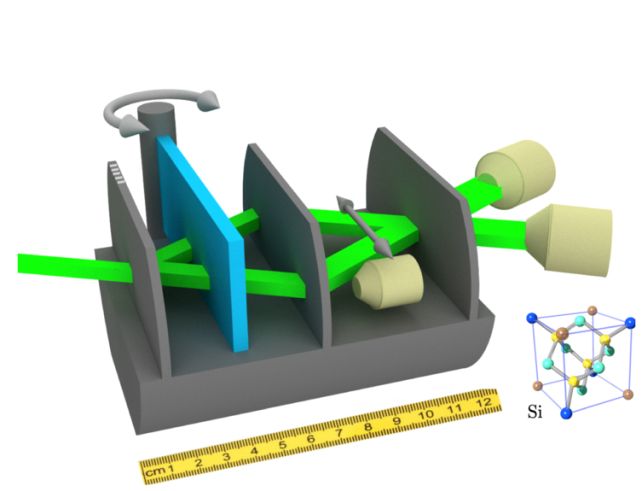At the very smallest scales, our intuitive view of reality no longer applies. It's almost as if physics is fundamentally indecisive, a truth that gets harder to ignore as we zoom in on the particles that pixelate our Univerrse.
In order to better understand it, physicists had to devise an entirely new framework to place it in, one based on probability over certainty. This is quantum theory, and it describes all sorts of phenomena, from entanglement to superposition.
Yet in spite of a century of experiments showing just how useful quantum theory is at explaining what we see, it's hard to shake our 'classical' view of the Universe's building blocks as reliable fixtures in time and space. Even Einstein was forced to ask his fellow physicist, "Do you really believe the Moon is not there when you are not looking at it?"
Numerous physicists have asked over the decades whether there is some way the physics we use to describe macroscopic experiences can also be used to explain all of quantum physics.
Now a new study has also determined that the answer is a big fat nope.
Specifically, neutrons fired in a beam in a neutron interferometer can exist in two places at the same time, something that is impossible under classical physics.
The test is based on a mathematical assertion called the Leggett-Garg inequality, which states that a system is always determinately in one or the other of the states available to it. Basically, Schrödinger's Cat is either alive or dead, and we are able to determine which of those states it is in without our measurements having an effect on the outcome.
Macro systems – those we can reliably understand using classical physics alone – obey the Leggett-Garg inequality. But systems in the quantum realm violate it. The cat is alive and dead simultaneously, an analogy for quantum superposition.
"The idea behind it is similar to the more famous Bell's inequality, for which the Nobel Prize in Physics was awarded in 2022," says physicist Elisabeth Kreuzgruber of the Vienna University of Technology.
"However, Bell's inequality is about the question of how strongly the behavior of a particle is related to another quantum entangled particle. The Leggett-Garg inequality is only about one single object and asks the question: how is its state at specific points in time related to the state of the same object at other specific points in time?"
The neutron interferometer involves firing a beam of neutrons at a target. As the beam travels through the apparatus, it splits in two, with each of the beam's prongs traveling separate paths until they are later recombined.
Leggett and Garg's theorem states that a measurement on a simple binary system can effectively give two results. Measure it again in the future, those results will be correlated, but only up to a certain point.

For quantum systems, Leggett and Garg's theorem no longer applies, permitting correlations above this threshold. In effect this would give researchers a way to distinguish whether a system needs a quantum theorem to be understood.
"However, it is not so easy to investigate this question experimentally," says physicist Richard Wagner of the Vienna University of Technology. "If we want to test macroscopic realism, then we need an object that is macroscopic in a certain sense, i.e. that has a size comparable to the size of our usual everyday objects."
In order to achieve this, the space between the two parts of the neutron beam in the interferometer is on a scale that's more macro than quantum.
"Quantum theory says that every single neutron travels on both paths at the same time," says physicist Niels Geerits of the Vienna University of Technology . "However, the two partial beams are several centimeters apart. In a sense, we are dealing with a quantum object that is huge by quantum standards."
Using several different measurement methods, the researchers probed the neutron beams at different times. And, sure enough, the measurements were too closely correlated for the classical rules of macro reality to be at play. The neutrons, their measurements suggested, were actually traveling simultaneously on two separate paths, separated by a distance of several centimeters.
It's just the latest in a long string of Leggett-Garg experiments that show we really do need quantum theory in order to describe the Universe we live in.
"Our experiment shows: Nature really is as strange as quantum theory claims," says physicist Stephan Sponar of the Vienna University of Technology. "No matter which classical, macroscopically realistic theory you come up with: It will never be able to explain reality. It doesn't work without quantum physics."
The research has been published in Physical Review Letters.
